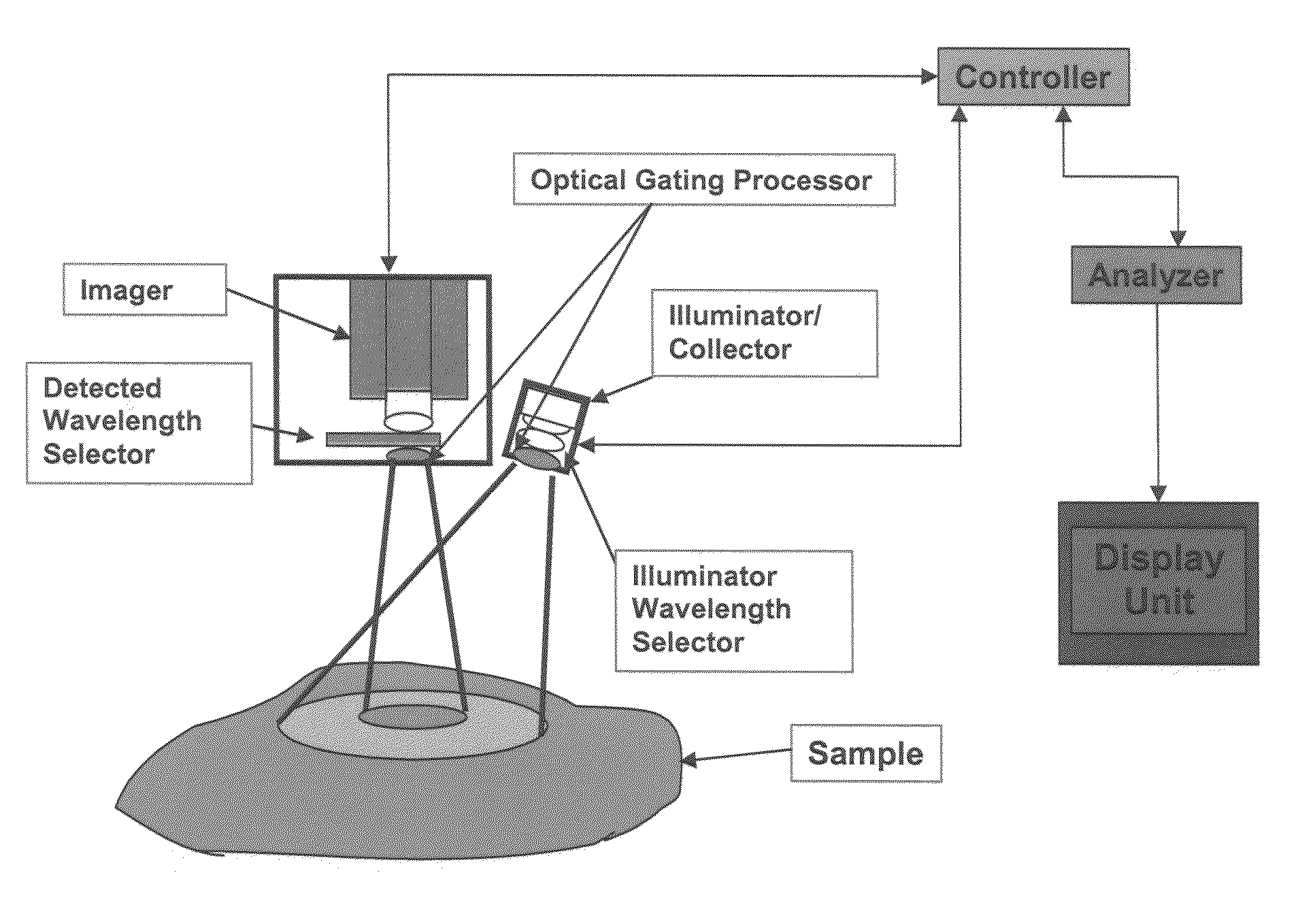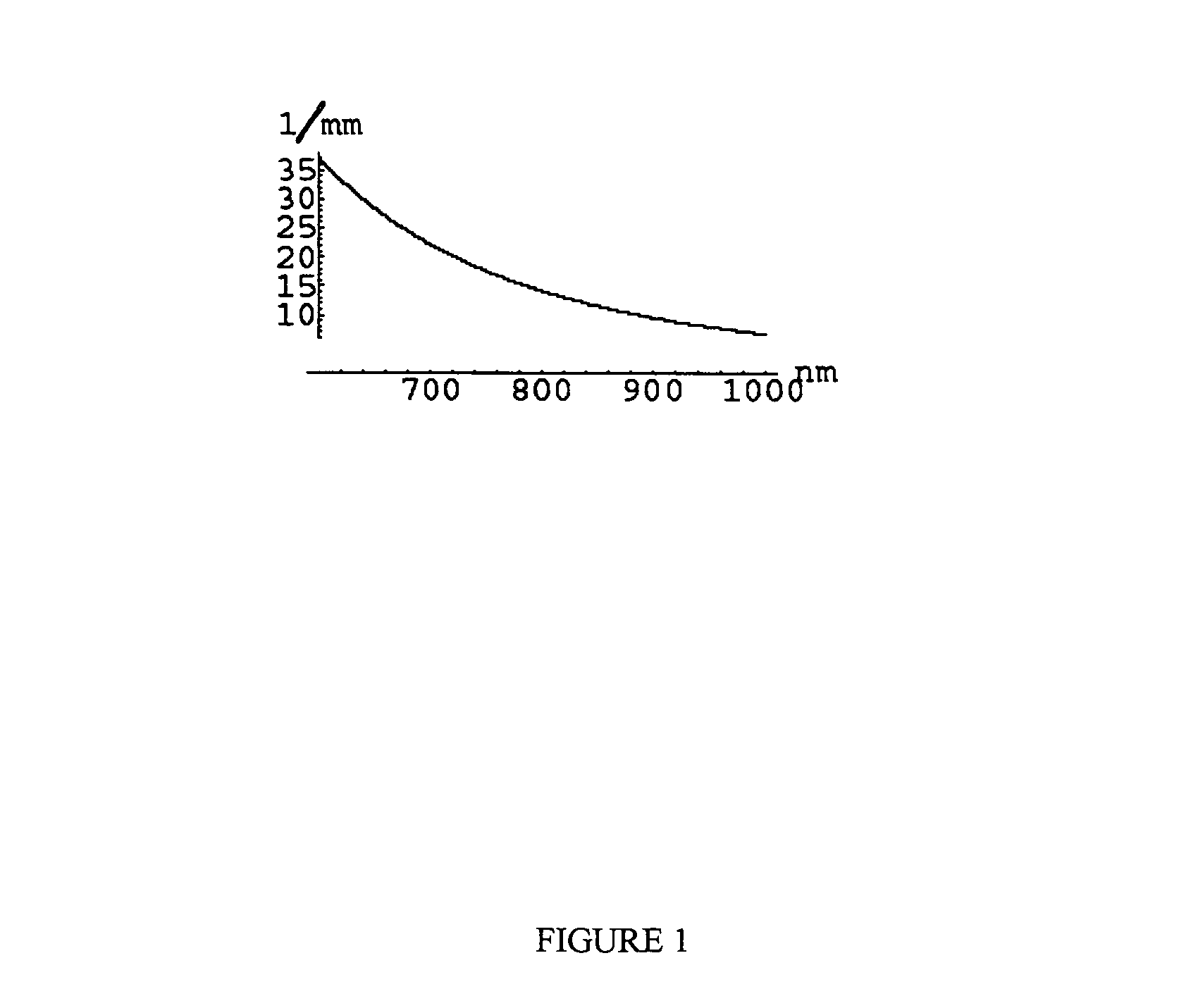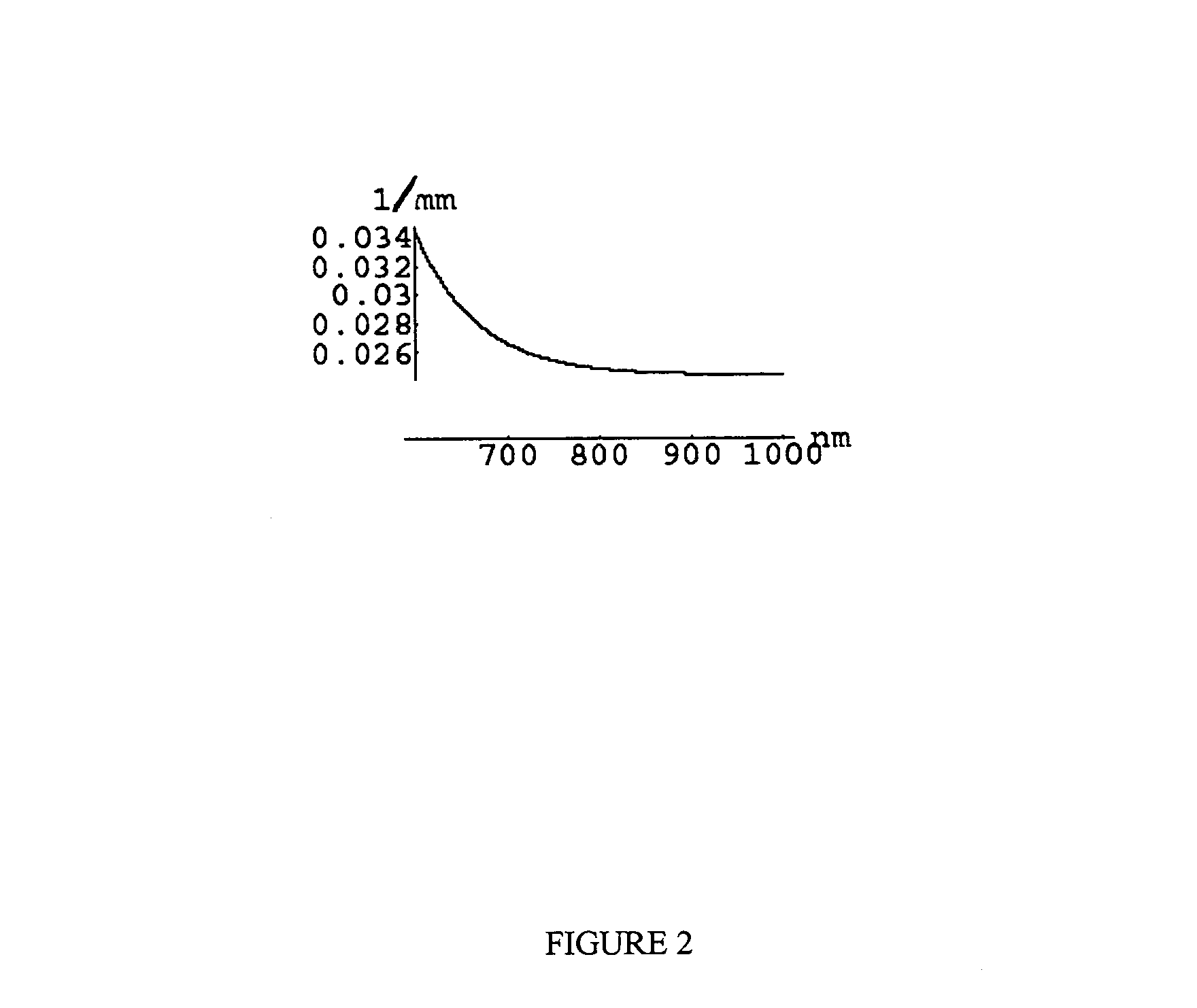Multispectral imaging for quantitative contrast of functional and structural features of layers inside optically dense media such as tissue
a multi-spectral imaging and tissue technology, applied in the field of quantitative optical spectroscopic imaging, can solve the problems of inability to accurately detect the presence of a single layer of tissue, the inability to use spectroscopic techniques to aid in the diagnosis of various diseases, and the complexity of reflectance spectroscopy, etc., to achieve the effect of improving measurement and analysis
- Summary
- Abstract
- Description
- Claims
- Application Information
AI Technical Summary
Benefits of technology
Problems solved by technology
Method used
Image
Examples
example 1
Multispectral Analysis
[0240]The disclosed invention may be used to obtain medically relevant functional and structural contrast from multispectral images. There are some commercially available multispectral imaging system and a number of ways of building multi-spectral imaging systems that are known to those skilled in the art. Typically such systems have a broad-band illumination source, a wavelength selecting device such as a filter wheel or tunable LCD filter on either the camera or illumination source, and an imager such as a CCD camera. The method was tested on data obtained using a CCD-based spectral imager that captures 512×512 pixel images at six wavelengths using a filter wheel on the camera (NIR at 700, 750, 800, 850, 850, 900 nm, with 50 nm FWHM and 1000 nm with 10 nm FWHM). While this is not generally the optimal choice of wavelengths and FWHM for the filters, it was sufficiently close to the optimal choice to show contrast as desired. The images have 16 bits per pixel s...
example 2
CMOS Extended Dynamic Range
[0247]In biological tissue simulating phantom work that has already been completed, a commercially available CMOS-based color camera (Canon D-30) has been used to analyze the intensity-linearity of the pixels and the spectral response functions of the color filters on the pixels. [Additionally, a method was devised to access the raw 12 bit values, thereby bypassing the spatial filtering employed by the camera manufacturer to obtain satisfying color rendering] The method requires access to the raw pixel values (e.g., 12 bit on the Canon D-30) on the camera because it is necessary to bypass the spatial filtering which is often employed by consumer camera manufacturers to obtain satisfying color rendering. The method from obtaining raw values from an imaging device such as a CMOS device are described by the CMOS chip manufacturer's product data sheet or application instructions. Alternatively, some imaging systems include a method or instructions for obtainin...
PUM
| Property | Measurement | Unit |
|---|---|---|
| wavelengths | aaaaa | aaaaa |
| wavelengths | aaaaa | aaaaa |
| FWHM | aaaaa | aaaaa |
Abstract
Description
Claims
Application Information
 Login to View More
Login to View More - R&D
- Intellectual Property
- Life Sciences
- Materials
- Tech Scout
- Unparalleled Data Quality
- Higher Quality Content
- 60% Fewer Hallucinations
Browse by: Latest US Patents, China's latest patents, Technical Efficacy Thesaurus, Application Domain, Technology Topic, Popular Technical Reports.
© 2025 PatSnap. All rights reserved.Legal|Privacy policy|Modern Slavery Act Transparency Statement|Sitemap|About US| Contact US: help@patsnap.com



